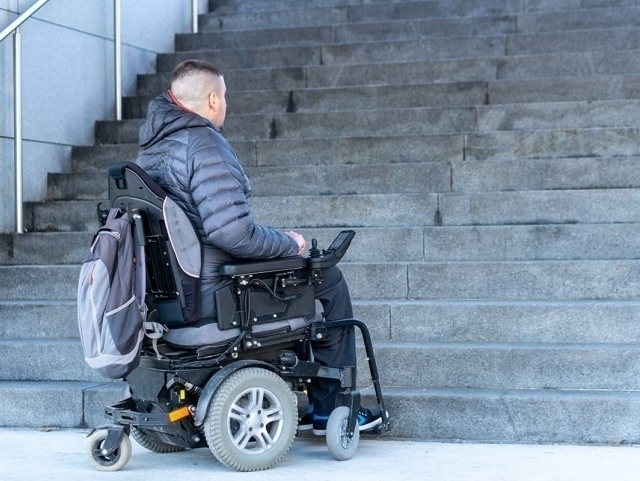Rights of persons with disabilities: Paper promises or reality?
Review
−
03 December 2024 7559 4 minutes
According to 2022 data, in Uzbekistan, where 2-3 percent of the population has disabilities, citizens with disabilities still face significant barriers to movement and inclusion. This problem is not unique to Uzbekistan but is prevalent even in developed countries. However, adopting international documents and developing laws are insufficient without practical implementation.
By Resolution No. 47/3 of the United Nations General Assembly on October 14, 1992, December 3 is celebrated annually as the International Day of Persons with Disabilities. This day aims to promote the rights of persons with disabilities in all spheres of society and to draw public attention to their challenges. Beyond raising awareness, it seeks to ensure equality and justice, improving lives while fostering societal development.
A 2022 World Bank study reported that 845,300 people, or 2.3 percent of Uzbekistan's population, were officially recognized as persons with disabilities. Of the population aged three and older, 13.5 percent have some form of disability, and 3.5 percent have severe disabilities. Rural areas house the majority of this demographic, with 532,000 individuals compared to 313,300 in urban areas. Regions like Navoi (3.6 percent), Syrdarya (3.1 percent), and the Republic of Karakalpakstan (2.9 percent) report the highest disability rates.
Legislation on Persons with Disabilities
Uzbekistan approved the Law “On the Rights of Persons with Disabilities” in 2020. Based on the UN Convention on the Rights of Persons with Disabilities, the law addresses disability as both a medical and social issue. Key provisions include:
- Equal Rights: Guaranteed access to education, labor, healthcare, culture, and sports.
- Social Protection: Material assistance, social services, and improved living conditions.
- Infrastructure Adaptation: Transport, buildings, and structures must accommodate persons with disabilities.
- Employment Promotion: Incentives for employers to hire persons with disabilities.
- Monitoring and Enforcement: Prevention of rights violations and implementation of protections.
Based on the UN Convention on the Rights of Persons with Disabilities, this law reframes disability as a societal issue rather than a purely medical one.
- In 2022, recommendations were introduced for adapting workplaces and environments for persons with disabilities. These include:
- Installing tactile signs and typhlotechnical aids for visually impaired individuals.
- Providing accessible digital tools, including Braille keyboards and audio displays.
- Equipping workplaces with ergonomic designs suitable for various disabilities.
Additionally, the establishment of the Adaptive Sports Association in 2024 has expanded opportunities in sports. The performance of Uzbek Paralympians at the 2024 Paris Games—ranking 13th overall—underscores the potential of athletes with disabilities to inspire societal change.
Global Perspectives on Disability Rights
Globally, approximately 15 percent of the population—over 1 billion people—live with disabilities, with the majority residing in developing countries. Efforts in developed nations range from inclusive education initiatives in Japan and Canada to infrastructure adaptations in France and employment encouragement in Scandinavia. Despite these advances, significant gaps remain.
Challenges in Uzbekistan’s Public Spaces
Public transport in Uzbekistan, while improving with modern buses equipped for accessibility, still falls short. Many older buses and metro systems remain ill-suited for individuals with disabilities. Wheelchair users face limited mobility due to inaccessible inner staircases in metro stations, while visually impaired individuals struggle to navigate without companions.
Monitoring conducted by the Association of Disabled People of Uzbekistan and the “Inclusive Life” NGO in 2024 revealed significant shortcomings. Many public spaces, including museums, hotels, and religious sites, lack ramps, tactile walkways, and adapted facilities. Narrow entrances and stairs further exacerbate the barriers.
Education and Employment Inequalities
Globally, 40 percent of children with disabilities do not attend school, primarily due to a lack of inclusive education systems. Uzbekistan’s educational institutions are no exception, offering limited options for barrier-free learning environments. Similarly, workplace accessibility remains a challenge, with only 30 percent of individuals with disabilities participating in formal labor markets, per WHO estimates.
The Humanitarian Crisis of Conflict-Driven Disabilities
Ongoing wars and armed conflicts worldwide add thousands to the population of persons with disabilities each year. Beyond being a humanitarian crisis, this trend poses significant economic and social challenges. The physical and psychological toll on civilians underscores the need for comprehensive policies to support newly disabled individuals.
Concluding Remarks
Despite legal frameworks and occasional infrastructural advancements, the daily lives of persons with disabilities in Uzbekistan remain fraught with challenges. The reality—as evident in public transport, education, and employment—is far removed from the promises enshrined in law. True equality requires not only legislative action but also practical, inclusive implementation. Until then, the rights of persons with disabilities risk being confined to paper rather than becoming a lived reality.
Live
All



